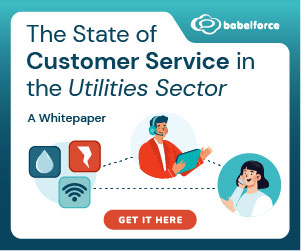Rafael Cortes of Foehn highlights the advantages of planning your contact centre and unified communications requirements together.
Cloud Brings Unified Communications and Contact Centre Together
For the larger enterprise, with big teams of agents, dedicated managers and sophisticated omnichannel requirements, the roles of unified communications and cloud contact centres in the past have been clearly defined.
More recently, the boundaries are becoming more blurred. For the SME, though, with customer experience requirements that are simpler but no less critical, the overlap of functionality between modern, cloud-based unified communications and cloud contact centre systems is all the greater and can present a confusing picture.
For small businesses, eager to improve customer experience and invest in the right technology, the investment decision is further complicated by decisions regarding the fate of legacy equipment, often installed years ago when contact centre systems and telephone systems were separate, siloed technologies using hardware-based, on-premise or early hosted VoIP solutions. These systems were conceived at a time when phone and contact centre vendors, protecting their own interests, battled for the functionality high ground with a wave of new software features arriving from both directions.
Unfortunate businesses seeking a single system solution were faced with the choice: do you build your contact centre software on top of your phone system or do you change your phone system to work with your contact centre?
Thankfully, cloud has changed all that. Simpler application access and integration means that smaller businesses can almost pick and choose the features they need.
Furthermore, the ease of implementation and cost savings associated with cloud means that ripping out and replacing old legacy systems is a realistic option with minimal disruption and tangible return on investment.
What Happens When Unified Communications Meets the Contact Centre
Perhaps the most attractive answer to the unified communications and cloud contact centre relationship is provided by those vendors that offer a complete cloud communications suite of technology offering full unified communications and cloud contact centre functionality plus the more recent arrival of collaboration tools.
For the small business planning to extend cloud phone and contact centre resources in the future, this provides the important benefits of continuity, an integrated solution and a single technology partner.
According to Aberdeen Research, though, the advantages go much further. When unified communications and collaboration functionality is integrated with a contact centre system, the ease of sharing information and collaborating in real time means agent productivity can increase by three times. In particular, agent time spent looking for information is reduced and response to customer questions is all the faster.
The research also shows that when unified communications and cloud contact centres work together, first contact resolution and customer satisfaction can improve by similar orders of magnitude whilst customer complaints are halved. The implications are important for the large enterprise and the SME alike.
Advantages of a Single Technology Suite Covering UC, Collaboration and Cloud Contact Centres
In response, forward-thinking vendors are offering integrated unified communication and collaboration and cloud contact centre systems that build collaboration between colleagues across the business, reducing information silos and improving support for the customer experience from inside and outside the contact centre.
At Foehn, for example, the VoxivoCX cloud contact centre system offers all the features required by the contact centre team to deliver essential CX services. Importantly, though, there are many additional features in common with the Voxivo Cloud phone system, giving the contact centre team access to unified communications and collaboration capabilities for call management and better team working.
At the same time, on the unified communication side, the phone system includes simple IVR, queuing and call management features that ensure CX for all inbound callers is maximized across all business departments. After all, brand values can be shaped by regular communications from suppliers, agents and business partners, not just customers.
For these stakeholders who are making incoming calls from outside the contact centre, the communications experience is important too.
For more from Foehn on this topic, download a copy of their report: Unified Communications Buyers Guide 2018
Author: Robyn Coppell
Published On: 3rd Jul 2019 - Last modified: 9th Jul 2019
Read more about - Guest Blogs, Foehn





































